How to put a fuel filter. Fuel filter. Important
Regarding the correct installation of the fuel filter and the arrow on the filter, many people know how, but there are those who doubt it. So:
How to set (direction)?
Nevertheless, there is a difference. In the figure (photo No. 1) it is more clear - we look.
Red indicates dirt and gray arrows indicate flow direction (pressure). It is clear that in the first case (incorrectly) the pressure tends to push the settled dirt through the curtain, and particles commensurate with the pore sizes in the paper will pass through the filter. In the second case (correctly) they will settle to the bottom of the case and remain there - therefore, the filter clogs less and lasts longer.
As for the “side” and the arrows marked on the filter, they can be located in different ways and the most reliable way to check with a thin (not sharp!) Wire.
There are two common places where filters are installed, so you should check your car's instruction manual to determine where to look. The most common place for modern cars is in the fuel line, located on the underside of the car, in front of the gas pump. In some vehicles, the fuel filter is located in the engine compartment next to the line leading to the fuel inlet.
Some vehicles may have a filter in different places, so be sure to check your service manual. It is possible that for some vehicles you should access the filter from inside the cab. If necessary, use a jack to lift the vehicle. If the fuel filter is at the bottom of your car, you will need to use a hydraulic connector to access it. Slide the socket under the cart at one of the designated points to lift it, and depending on the type of socket, it pushes or rotates the lever so that it lifts.
You can insert the wire from the side opposite the rolling. If the wire almost immediately rests in a metal plate, and on the other hand (rolling) goes deeper, then almost certainly the filter is normal and the exit from the rolling side. You can check for clearance - a bright light source will clearly be visible through the bullshit filter. You can not pay attention to the arrow (Fig. No. 3). Although there is a correct drawing of the arrow (Fig. No. 4)
After you have lifted the car, place the fixed supports under it before working there. Never trust a cat to support the weight of the vehicle under which you will work. Place a bowl or bucket under the fuel filter. Although you applied pressure to the fuel line, some fuel may remain in it and it may spill when the filter is turned off. Place a bowl or bucket under the filter so that they contain drops or jets of gas that fall.
Be careful when using plastic containers for gasoline, as it melts some types of plastic and can cause leaks.
- Do not mix gasoline with oil or refrigerant for recycling.
- Gasoline must be stored in its own container until it is recycled.
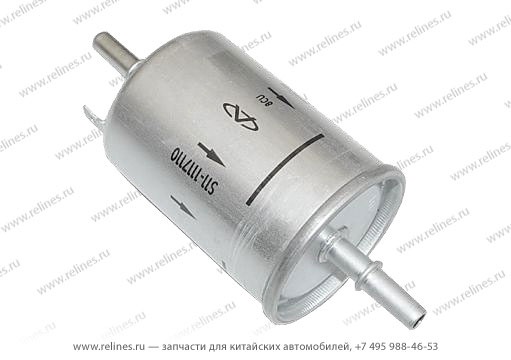
fig.№ 4. The correct arrow.
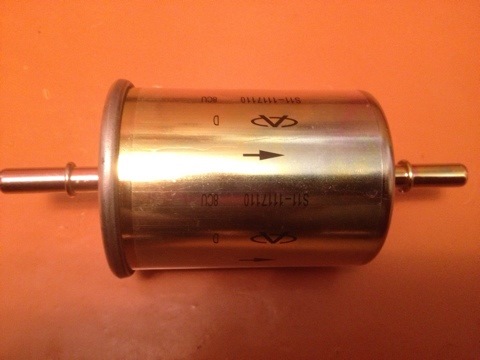
fig.№ 3. - The arrow is drawn incorrectly.
P.S. It is also important that in the first case, the flow pressure tends to break the curtain and, if it is clogged, this (rupture) may well occur. The most dangerous thing is that outwardly this will not be visible. In the second case, the pressure tends to compress the curtain and if it clogs, then the car simply will not go.
These clamps usually break when removed, so it is recommended that you buy replacement clamps next to the fuel filter. The clamps holding the fuel filter in place are made of thin plastic and break easily. You can buy replacement fuel filter clamps at the auto parts store closest to your home. If you can delete them without taking them apart, you can use them again. . Remove fuel lines from the filter. After you have removed the clamps, slide the gas lines to remove them from the nozzles at both ends.
Be sure to tilt the fuel lines into the bowl or bucket that you put when you remove them so that spilled gasoline gets into the container. You should wear safety goggles and gloves during this part of the project to be sure of any gas spills. Avoid spilling gas directly into the ground. . Slide the fuel filter out of the holder. The filter is held in place by a metal bracket or bracket that hugs its outer cover. If the gas lines are disconnected, you can remove the filter from the holder by pushing it in the direction of the front of the car.
By car, it looks like this - Fig. No. 2
A hot question about the quality and fake fuel filters:
Fig.№ 5. - top quality filter; the bottom is bullshit. You can distinguish by filter weight (bullshit weight will be less) and the above method.
A fake can be bought both of officials and in company stores and on the Internet - it is checked!
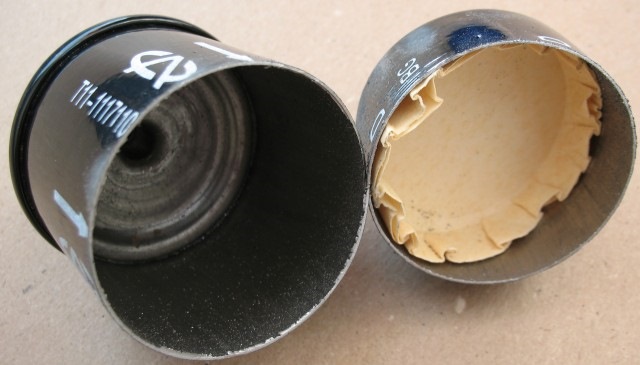
The filter has a bell-shaped shape, so it can only slide in one direction. If your filter is installed in a different way, you may need to slide it back to remove it. Some fuel filters located under the hood can be held in the holder with a screw that must be removed to remove the filter. The task of a diesel fuel filter is to remove harmful pollutants, and in some cases in water, since both of them can cause damage to critical components of the fuel system.
Fig.№ 6. Bullshit.
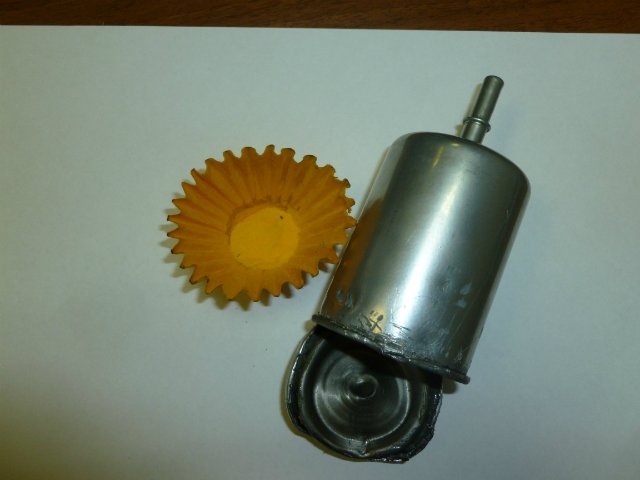
Fig.№ 7. Bullshit.
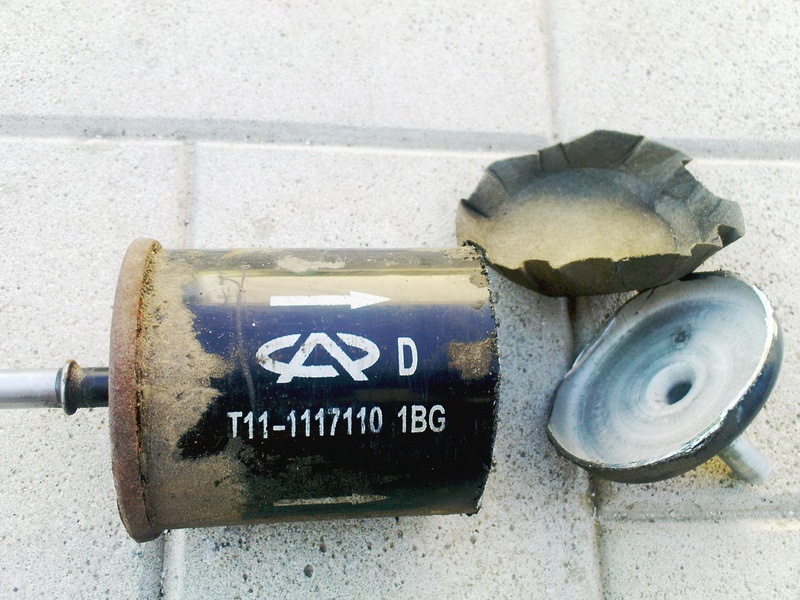
Fig.№ 8. Bullshit.
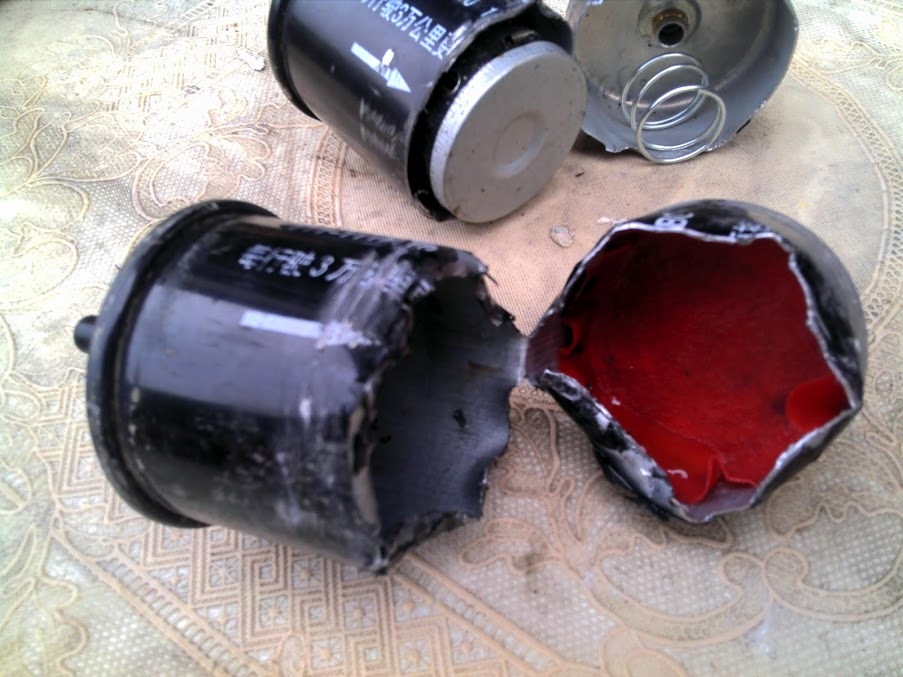
Fig. No. 5 Top - the norm. The bottom is bullshit.
In figures No. 6-8, examples of fake. Be careful when buying!
P.S. Are the Chinese bad?
Here is a quote from the forum "...":
"He worked in one office that sells spare parts under the Weber brand for Russian cars. Orders for manufacture are placed in China, the Chinese have absolutely nothing to do with the quality of the part, they ask only about the final cost! Do you want an amortic for 100 re - it’s not a question, it they’ll make it out of foil and shit it in. You want Amorth two times cooler than Kayaba - it’s also not a question - the Chinese will do it! Only the price tag will be “1.5 Kayaba.” What is copyright? The Chinese also have little idea (worked at an exhibition in Moscow), at the stand were Michelin flavors. Chinese brothers and say, “We can do this, it's worthless.” Asking about Michelin’s license to do this, those eyes are wider ... I think someone ordered a batch of filters for such manufacturers for the price of 3 rubles, with the Cherie logo — they and they did. And it seems to me that this someone is not Chinese. "
It is very important that the filter is correctly installed for the filter to work properly. Very often, the correct filter setting is ignored or misunderstood. The following are steps to properly install a typical threaded connection for a diesel fuel filter. This does not apply to all types of threaded diesel filters. For other types, such as those that contain a fuel water sensor port, follow the specific installation procedures for each filter.
Our oil filters meet the highest requirements.
In addition, oil change intervals are becoming longer, also due to environmental protection. At the same time, they should show little resistance to oils and be less and less. Only the best materials and bending geometry can meet these requirements. Folds create a large surface area so that the filter collects dirt and provides an adequate flow of oil.
This is our RUSSIAN ordered for 3 rubles, received for 3 rubles, and sold for 200 rubles, as a quality product. What are the claims against the Chinese? None!
I bought 2 filters in China - the quality is normal!
1. Install the driven coupling half (Fig. 1, 2) on the advance coupling (damper coupling) and fasten with bolts.
If the oil has a particularly dense flow during cold winters or there are large accumulations in the filter, this becomes more difficult. When the engine starts, cold oil creates a pressure of up to 20 bar and flows very slowly through the filter. In this case, an overpressure valve is required that passes through the oil to the engine. Another valve ensures that the filter is filled with fresh oil at each new engine start: this is a non-return valve.
A sufficient thickness of the material provides resistance to powder spraying, as a stable anti-corrosion protection, avoids leaks, certain separation geometries facilitate disassembly also in reduced structural spaces. The clean location of the cartridge in the housing avoids workarounds at the interfaces. The set opening pressure is adapted to the relevant engine requirements, the oil supply is also guaranteed in the cold start phases or with an already clogged filter. Bending increases the surface, and with it the ability to absorb dirt, chemical and thermal resistance of the medium guarantee a long service life, adequate coagulation geometry minimizes the pressure difference, the final joints of the folds using staples or glue avoid accidental cases fixed in the paper ensures a distance between folds and prevents their formation of blocks between them. Using media with different specifications allows you to flexibly adapt to the relevant requirements of the automotive industry. It avoids the vacuum operation of the filter after the motors are disconnected from the new starter, the oil is immediately available to lubricate the engine delay when generating pressure of an elastomeric gasket of appropriate quality, adapted to temperature requirements. Correct threading and curvature ensure optimum connection to the motor flange. A properly designed seal housing provides a clamp for flange gaskets. Prevents collapse of the medium and holds it properly. . Naturally, each oil filter should separate the dirty old oil from the fresh filtered oil, and for this you need high-quality gaskets and fittings that are ideal.
2. Turn the coupling so that the bosses of the driven half coupling are installed in a horizontal position, and the mark on the end of the coupling is in the area of \u200b\u200bthe pointer.
4. Install the high-pressure fuel pump with an advance clutch (damper clutch) assembly on the engine and fasten it with bolts. Before tightening the drive pinch bolt and after setting the injection lead angle, adjust the flatness of the plate packs by moving the coupling half flange along the drive shaft. Install the fuel pump on the engine block in an upright position, tighten the mounting bolts evenly, avoiding the pump blockage. The final tightening torque of the pump mounting bolts is 30 ... 40 Nm (3 ... 4 kgf.m).
How oil flows through a filter
In addition, the filter must be installed carefully. For example, we weld an ultrasonic layer of plastic felt with a layer of paper. The components are different from the aluminum housing used so far for simple radial o-rings instead of axial seal concepts. The channels that conduct the oil have very small sections, and screwing is performed without applying a force flow directly to the plastic. The result is a weight of 5 to 15 percent lower, which also means lower fuel consumption.
5. Connect the pump sections to the nozzles with high-pressure fuel lines in the order shown in fig. 3.
7. Check for oil in the high pressure fuel pump and regulator housings, top up the oil, if necessary, to the level of the hole for the oil drain pipe.
8. Connect the oil supply and exhaust pipes and fuel lines.
Research and development for the seminar: also for you to establish safe products in the future
Universal development: new materials and designs. For a long time, the content of the oil filter was structured in a relatively simple way: paper impregnated with resins of the desired thickness and density was reasonably folded and placed inside a metal cylinder. However, the requirements for the filtering medium have changed a lot. New engine technology leads to higher pressure and increased oil nitration, which causes rapid aging of cellulose. It dries and loses its ability to bind dirt.
After starting the engine, adjust the minimum crankshaft idle speed as follows:
1. After loosening the locknut, unscrew the buffer spring housing 2–3 mm.
2. Use the minimum speed limit screw (the control lever should abut against this bolt) to adjust the minimum idle speed until small fluctuations in the engine speed appear. When the bolt is screwed in, the engine speed increases, when screwed out, it decreases.
However, filter life is required to increase. Therefore, new materials such as fiberglass or high-performance plastic fibers are currently being used. These plastic fibers, which are used in two layers, work as follows: one layer filters, and the other serves as a support and withstands high pressure. An oil filter with these characteristics has a useful life of seven times longer than one of the pulp, absorbs much more dirt, has the same permeability and prevents wrinkling.
3. Screw the buffer spring housing until the speed instability disappears. It is strictly forbidden to screw the buffer spring housing until its end is aligned with the end of the lock nut. After adjustment, lock the minimum speed bolt and the buffer spring housing with nuts.
The minimum idle speed can also be adjusted on a new engine in the initial period of its operation.
Robust development: replaceable hydraulic filter and filter cartridges. Hydraulic systems are exposed to high pressures up to 40 bar. They require replacing hydraulic filters with a thick wall and a stable closing disc. A removable polygonal lid is often removed to provide even greater ripple resistance.
Integrated innovation: oil filter and coolant modules. These complete oil filter modules are being used more and more often in industrial vehicles. Now there is a modular system of oil filters with numerous equivalent parts, which allows you to adapt them to many types of vehicles. Our engineers are increasingly designing oil filter housings to support other components such as the air intake. If an oil thermostat, a coolant thermostat, and a coolant pump are installed, there is a “coolant module”.
It is strictly forbidden to violate the factory adjustment of the maximum speed without subsequent verification at the stand during operation.











